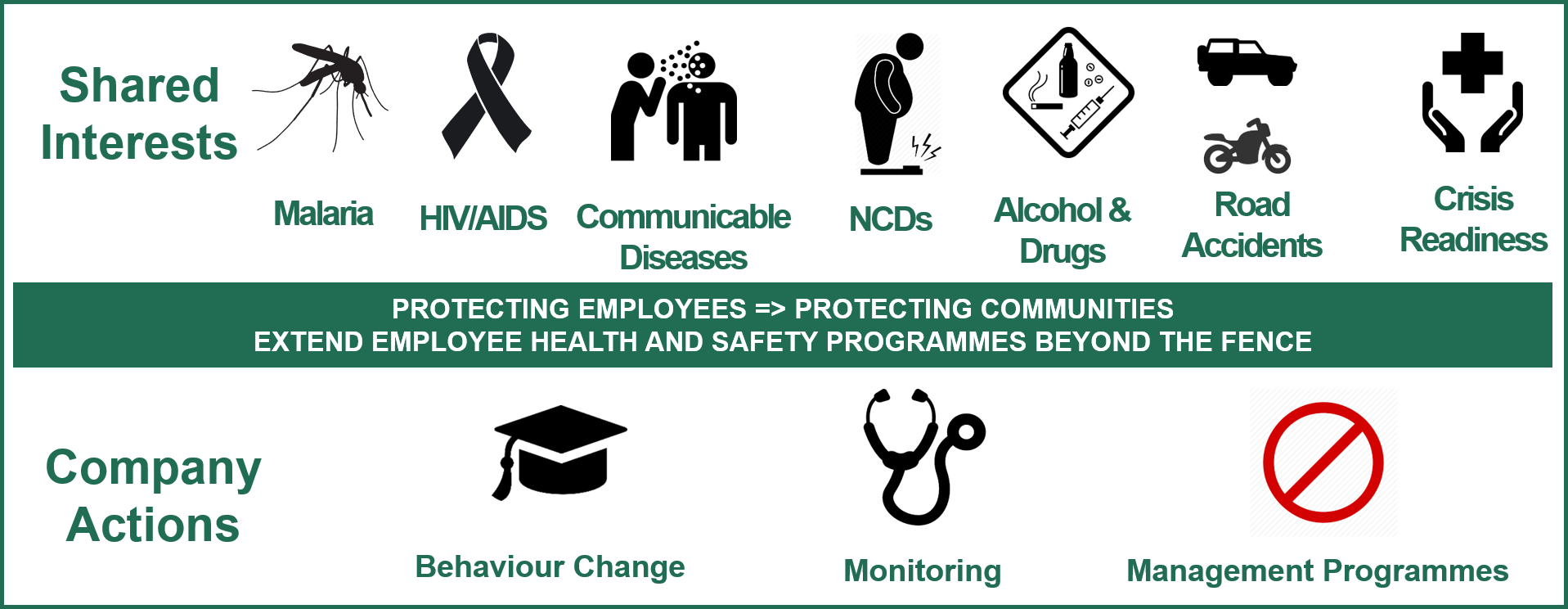Community Health - building from the inside
Sustainability | 8 September 2023

Community health is an area that is very broad and where it pays to stay focused on a (relatively) small number of areas.
Malaria, HIV and communicable diseases such as tuberculosis and hepatitis have long been priorities for company and community alike. Ebola and COVID-19 are more recent concerns. The first three are essential in so far as ensuring a healthy workforce is concerned and are standard practices for responsible companies operating in Africa. And they are not that difficult to address. Peer-to-peer education is a centre piece of HIV management, it is low cost and easy to extend out into the community. Tuberculosis and Hepatitis and Non-Communicable Diseases (NCDs) like diabetes and high blood pressure show up in the pre-employment medical. The NCDs can be managed through workforce education and well-being programmes, which again are easy to extend beyond the fence, especially so if peer education is used.
There are also many opportunities to extend management programmes into the community – although these are best done with specialist partners and through support of third-party initiatives. Tapping into government and NGO programmes to deliver bed nets for example by assisting with local distribution logistics or providing funding to a People living with HIVAIDs support group could be another. Larger scale interventions such as environmental modification and manipulation, introduction of natural predators, community-wide larvaciding and residual spraying can become costly and open-ended and any decision to invest in such a programme needs to be well considered. With any large-scale intervention, the role for the company should be as supporter and partner not as leader.
Alcohol and drug management are also givens, with zero tolerance and routine testing being commonplace and can have unexpected spinoffs into the community. At one site I worked at, after we introduced workplace breathalysers our community team started hearing from employee’s wives that their husbands were drinking less because they were worried about losing their jobs and as a result there was more money available in the household for basic needs like food, medicine and education. They also indicated there was a drop in the incidence of domestic violence. It was not something we were expecting when we put in the breathalysers, but a win is a win even if it is unanticipated.
Road accidents is another health and safety issue that is relatively easy to manage, whether it be through driver education, contract terms and conditions, vehicle speed limiting and monitoring, and community awareness. It is another area where there can be reputation spin-offs. I’ve worked where on two sites it was said by community members that “company vehicles don’t kill”
Crisis readiness can be as broad or as narrow as you choose – preparing for the next crisis by learning lessons from the COVID pandemic and Ebola are two examples – scenario planning for an industrial accident – a toxic release from site for example - is another. This type of preparation demands cooperation and coordination with government and non-government organisations and presents a great opportunity to build relationships.
These relatively simple actions contribute to achieving four Sustainable Development Goals targets for Good Health and Well-Being, contribute to Company Health and Safety priorities and address common community and government priorities. The result is (relatively) easy wins on multiple levels.
Post a Comment